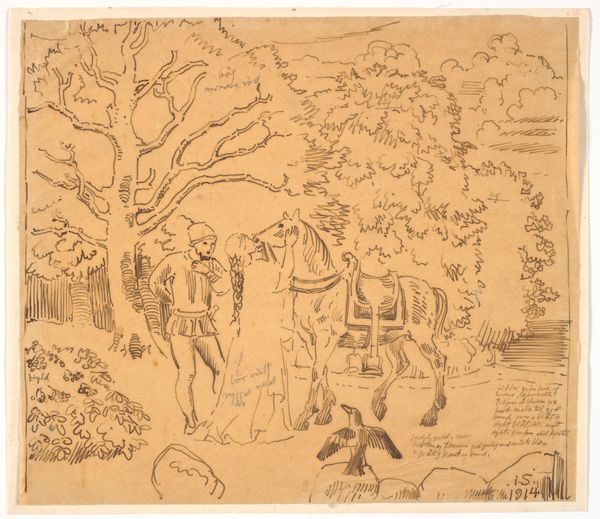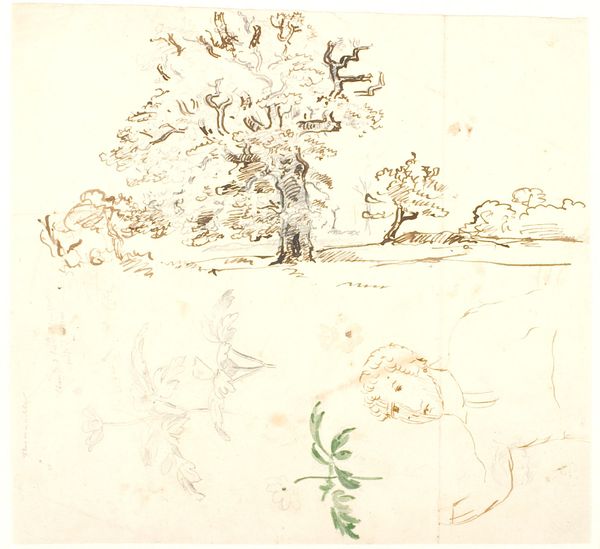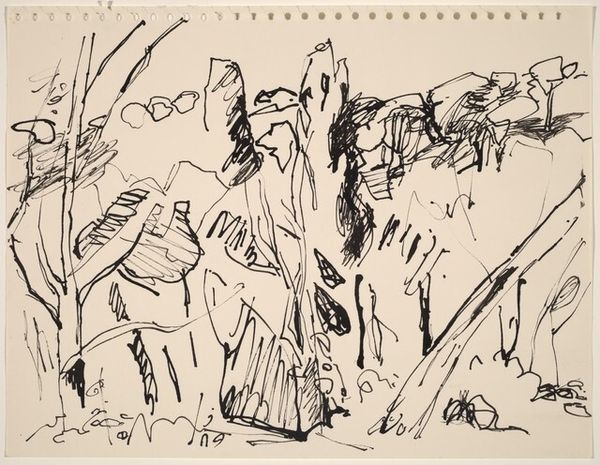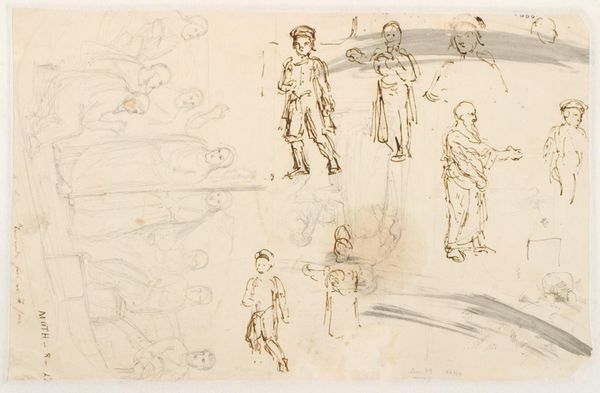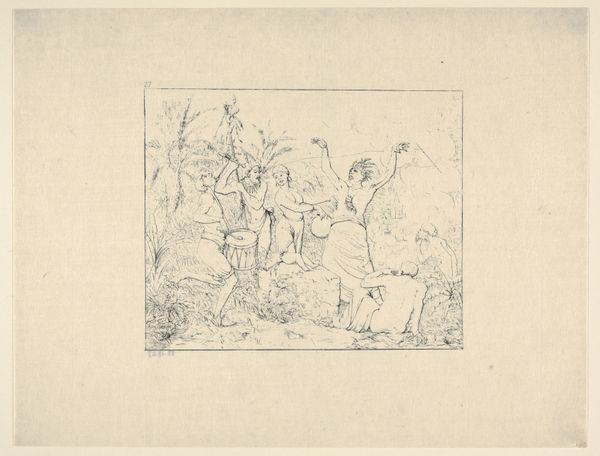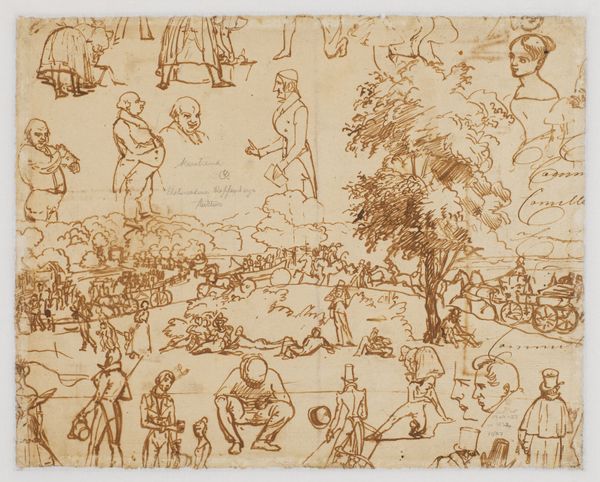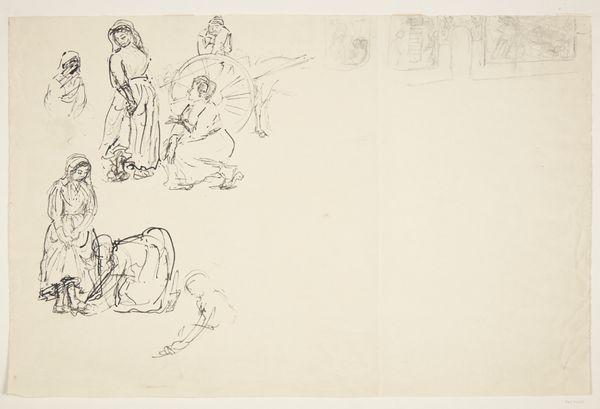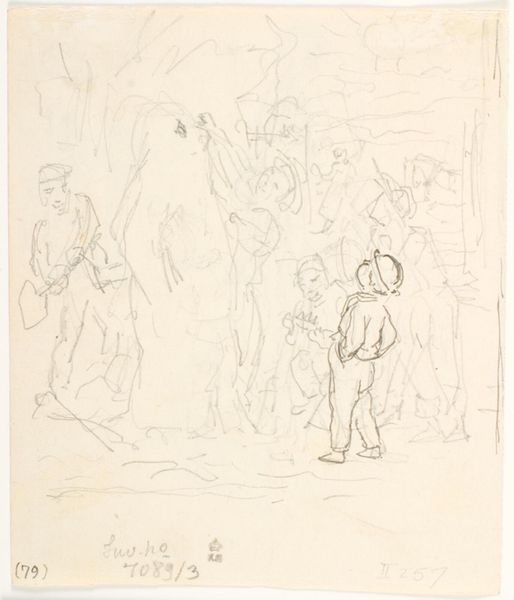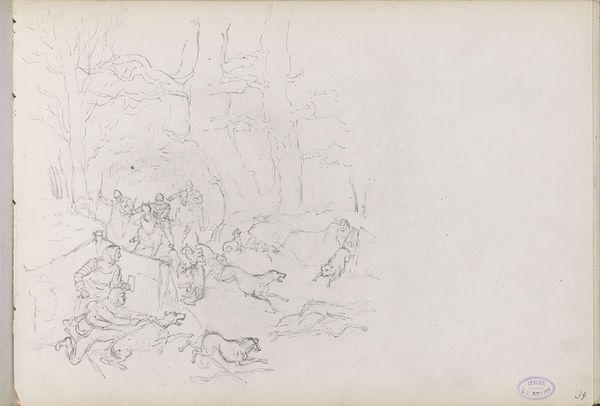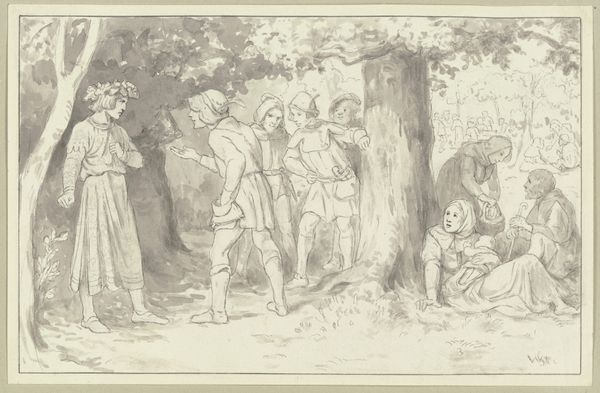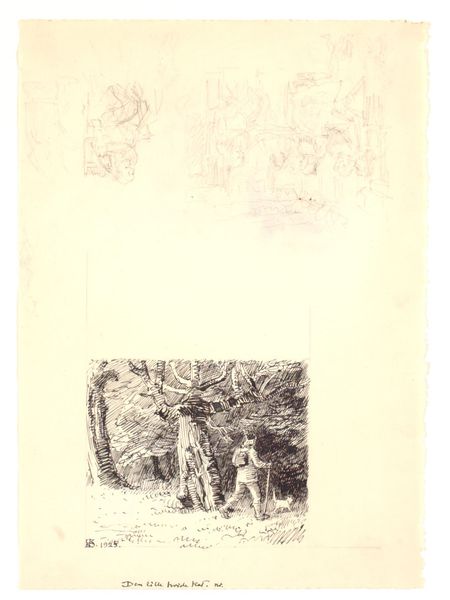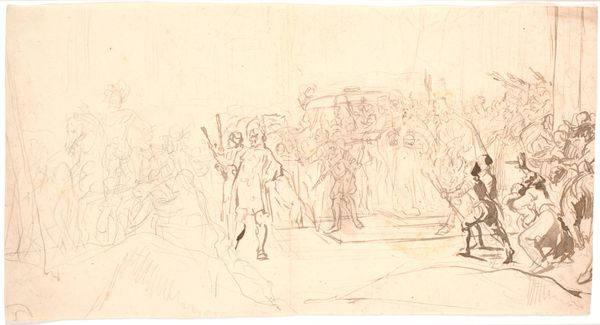
Billedudkast. Niels Ebbesen stående under en mægtig eg 1840 - 1843
0:00
0:00
drawing, ink, pen
#
drawing
#
ink drawing
#
narrative-art
#
pen sketch
#
landscape
#
etching
#
figuration
#
ink
#
romanticism
#
pen
Dimensions: 124 mm (height) x 177 mm (width) (bladmaal)
Curator: This ink drawing, created with a pen between 1840 and 1843, is entitled "Billedudkast. Niels Ebbesen stående under en mægtig eg," or "Draft. Niels Ebbesen Standing Under a Mighty Oak," by Dankvart Dreyer. It is currently held here at the SMK, the National Gallery of Denmark. Editor: Immediately, I notice a starkness to this landscape; it's minimally rendered yet feels imposing. The figures are almost secondary to the environment, hinting at their vulnerability or perhaps their profound connection to this place. Curator: Precisely. Dreyer, aligning with Romanticism's ethos, utilizes the figure of Niels Ebbesen to explore themes of national identity and heroism. Ebbesen was a medieval squire celebrated for assassinating Gerhard III, Count of Holstein, seen then as the oppressor of Denmark. Consider this work in relation to burgeoning nationalistic sentiments in 19th-century Denmark. Editor: That context provides a compelling lens. Ebbesen isn't simply a figure here; he represents a specific political act. Given the social history surrounding his persona, how did Dreyer's depiction contribute to shaping or reinforcing perceptions of heroism and resistance in Danish culture? Curator: Dreyer leverages the setting—the mighty oak—as a symbol of Danish strength and resilience. It’s a deliberate choice, one that situates Ebbesen within a landscape that embodies national identity. He’s framed not merely as a man, but as a guardian of the land, rooted in its very essence. The work speaks to issues of Danish sovereignty and challenges to external powers. Editor: The choice of medium—pen and ink—also speaks volumes, perhaps reflecting economic constraints as a draft piece. I'm also thinking of the absence of color and shadow. Is this about more than aesthetics, signifying a deeper commitment to essentializing a national narrative by reducing visual distractions? Or the social classes in Denmark? Curator: Absolutely. The monochromatic palette enhances the drawing's timeless quality. Ebbesen's act transcends mere historical event; he becomes an archetype, a symbol of Danish resistance that resonates across generations. It also subtly removes it from direct ties to other potential political flashpoints and centers the myth. Editor: So, what starts as an austere landscape drawing unveils layers of political messaging and cultural narrative. I'll never look at a sparse drawing the same way again! Curator: Indeed! I’ll continue to look into it through your insights.
Comments
No comments
Be the first to comment and join the conversation on the ultimate creative platform.
